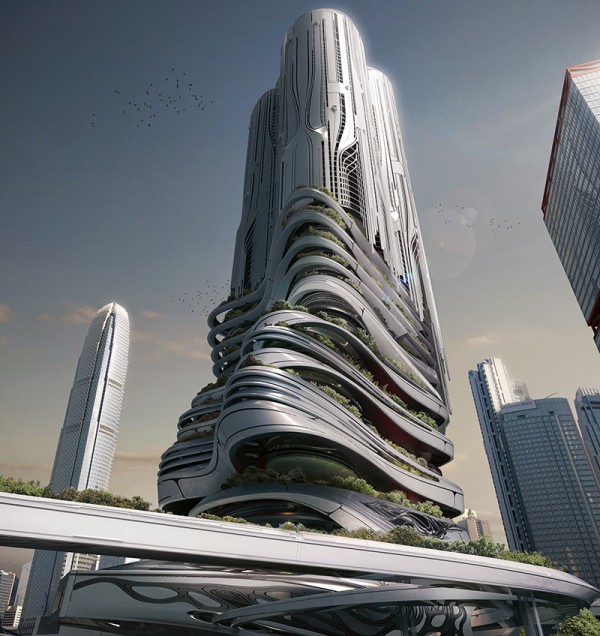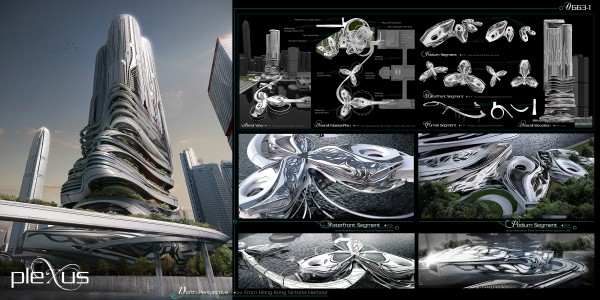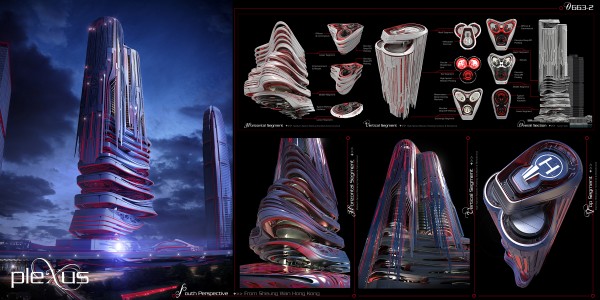Honorable Mention
2014 Skyscraper Competition
Chris Thackrey, Steven Ma, Bao An Nguyen Phuoc, Christos Koukis, Matus Nedecky, Stefan Turcovsky
United States
The PleXus Tower emerges from the banks of the West Hong Kong Harbor as a distribution of disjointed structures, initially finding itself amidst the neighboring ferry terminal. The structure starts out as distributed pods reaching out to connect with the city’s transportation fabric, accepting traffic from the water in the form of boats, ferries, and other water vehicles. This misfit arrangement of structural pods weaves into alignment with the Macau terminal to greatly increase the scale of the transportation hub. Bridged together by connected pipelines over the water, these pods work in harmony with the existing Macau Ferry Terminal to expediently move people towards the inner structure. This assembly forms a podium for the first segment of the tower, which emerges as a parking structure accessible from the highway network tangent to the tower.
Located at the water’s edge next to the Macau Ferry Terminal, the tower’s design varies in both its circulation and organization to control the speed at which it receives and negotiates the flow of traffic to optimize movement around and inside the structure.
As you move inward from the receiving pods, the main structure begins to evolve its own function. First is a horizontal parking structure on the lower levels of the main building, which emerges as a parking structure accessible from the connected highway network to efficiently receive car traffic. As you move up the main structure, business and shopping space is available, all accessible by car to the highest level of the tower. The upper reaches of the towers are set aside for residential space, high above the noise of the city, providing a living area that incorporates spectacular views of the dynamic city skyline. A heliport on top of the structure can receive air traffic from above.
The solid form on the south side of the main tower receives solar energy during the day, providing power to the building. The skin is breathable with numerous openings designed to overlap each other, undulating throughout, allowing carbon dioxide to easily filter out from the designated parking areas on the lower levels. Each parking level will also utilize foliage to further filter carbon dioxide from the air helping to reduce pollution in Hong Kong.
The PleXus tower was conceived as a segmented, but highly connected network of major transportation functions, as well as housing conventional program. The shift in the way the tower design is read, as well as in the functionality of each segment, provides greater programmatic control. Residential is accessible yet private, parking is convenient, and circulation through the ground-level public space is able to provoke interest. At night, lights will glow from the panels, reminding us of the connections these segments share as well as blending in with Hong Kong’s unique night skyline.

















